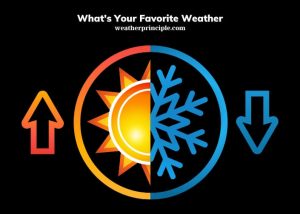Published on: May 4, 2023
Written by Kader Khan / Fact-checked by Shaown Khan
Weather balloons, often overlooked in the era of satellites and sophisticated weather models, continue to play a critical role in weather forecasting. This article takes a deep dive into the world of weather balloons, revealing how these unsung heroes aid meteorologists in predicting the weather and understanding our atmosphere.
Weather Balloons
Early developments and milestones
The first recorded use of a weather balloon dates back to 1896, when French meteorologist Léon Teisserenc de Bort launched a balloon carrying meteorological instruments to measure temperature and pressure at various altitudes. This pioneering work laid the foundation for the development of modern weather balloons.
Advancements during World War II
During World War II, the need for accurate weather data intensified. As a result, weather balloons became crucial tools for both the Axis and Allied powers. These balloons provided essential information for planning military operations, such as aircraft missions and troop movements.
Modern weather balloons and technological improvements
Today, weather balloons are equipped with advanced instruments called radiosondes, which transmit data back to Earth. Improvements in materials, tracking technology, and data analysis have made weather balloons even more indispensable in the field of meteorology.
Anatomy of a Weather Balloon
Balloon construction and materials
Modern weather balloons are typically made of latex or synthetic rubber materials, capable of expanding as they rise through the atmosphere. They are filled with either hydrogen or helium, which provides the necessary buoyancy for their ascent.
Radiosondes and their key components
Radiosondes are small, lightweight devices attached to weather balloons that measure atmospheric variables such as temperature, humidity, and pressure. They transmit this data back to Earth using radio signals, allowing meteorologists to analyze atmospheric conditions at different altitudes.
Payload systems and additional instruments
In addition to the radiosonde, weather balloons can carry other specialized instruments for specific research purposes, such as ozone sensors, cameras, or radiation detectors.
The Launch Process
Preparation and safety measures
Before a weather balloon is launched, its payload is carefully prepared, and the necessary safety measures are taken to ensure a successful flight. Meteorologists check the balloon’s integrity and secure the instruments, while also monitoring local weather conditions to avoid any potential hazards.
Global launch schedules and coordination
Weather balloons are launched simultaneously around the world, typically twice daily, to ensure consistent and accurate data collection. This global effort is coordinated by organizations such as the World Meteorological Organization (WMO).
The ascent: Collecting valuable data
Once launched, weather balloons ascend at a rate of approximately 1,000 feet per minute. As they rise through the atmosphere, they collect valuable data that helps meteorologists generate weather forecasts.
Data Collection
Atmospheric pressure measurements
Pressure sensors in the radiosonde measure atmospheric pressure at various altitudes, allowing meteorologists to understand the vertical structure of the atmosphere and identify weather systems.
Temperature and humidity measurements
Temperature and humidity sensors provide crucial information about the thermal profile of the atmosphere and the amount of moisture present, which are key factors in the development of weather systems.
Wind speed and direction measurements
By tracking the movement of weather balloons, meteorologists can determine wind speed and direction at different altitudes. This information is vital for understanding jet streams, storm systems, and local wind patterns.
Tracking Weather Balloons
Ground-based tracking methods
Ground-based tracking systems, such as radar and GPS receivers, monitor the position of weather balloons as they ascend through the atmosphere. This tracking data provides valuable information on wind speed and direction at various altitudes.
Satellite-based tracking technology
In addition to ground-based methods, satellite technology also plays a role in tracking weather balloons. Some radiosondes are equipped with GPS transmitters that allow meteorologists to track their position and collect wind data with even greater precision.
Balloon trajectory and data retrieval
As weather balloons travel through the atmosphere, they follow a trajectory influenced by wind patterns. Meteorologists use the balloon’s trajectory data to refine weather models and improve forecast accuracy.
The Role of Weather Balloons in Forecasting Models
Global weather models and data assimilation
Data collected by weather balloons is crucial for the development and refinement of global weather models. These models use complex algorithms to simulate the Earth’s atmosphere and predict future weather patterns based on current observations.
Regional and mesoscale models
Weather balloon data also plays a vital role in regional and mesoscale forecasting models, which focus on smaller geographic areas and shorter time frames. These models help meteorologists generate more localized and precise forecasts.
Improving short-term and long-range forecasts
By providing detailed information on the atmosphere’s vertical structure, weather balloons contribute to the improvement of both short-term and long-range forecasts. This data enables meteorologists to make more accurate predictions and issue timely warnings for severe weather events.
Weather Balloons and Severe Weather Prediction
Tornado and severe thunderstorm forecasting
Weather balloons help meteorologists identify the atmospheric conditions that can lead to the formation of tornadoes and severe thunderstorms. This information allows forecasters to issue timely warnings, potentially saving lives and reducing property damage.
Winter storm and blizzard prediction
Data from weather balloons can also help predict the development and track of winter storms and blizzards. By understanding the temperature, moisture, and wind patterns in the atmosphere, meteorologists can provide advanced warnings for these hazardous weather events.
Tropical cyclone tracking and intensity forecasting
Weather balloons contribute to the understanding of tropical cyclones, including their formation, movement, and intensity. This information is critical for accurate storm tracking and intensity forecasts, which help communities prepare for potential impacts.
Research and Specialized Applications
High-altitude research projects
Weather balloons have been used for various high-altitude research projects, such as studying cosmic rays, testing new aerospace materials, and investigating the upper atmosphere’s properties.
Ozone monitoring and atmospheric chemistry
Specialized weather balloons carrying ozone sensors have contributed to our understanding of the ozone layer and the complex chemistry of the atmosphere.
Unique meteorological events and phenomena
Weather balloons can be deployed to study unique meteorological events and phenomena, such as volcanic eruptions, solar eclipses, or atmospheric gravity waves.
Environmental and Sustainability Concerns
Balloon waste and ecological impacts
Weather balloons can create environmental concerns, as they often end up as waste after they burst and fall back to Earth. This waste can pose hazards to wildlife and ecosystems.
Biodegradable balloons and material innovations
To address these concerns, researchers have developed biodegradable balloons and other environmentally friendly materials, reducing the ecological impact of weather balloon operations.
Responsible recovery and reuse initiatives
Some organizations actively promote the recovery and reuse of weather balloon payloads, which can help reduce waste and minimize environmental impacts
The Future of Weather Balloons
Emerging technologies and alternatives
As technology continues to advance, new alternatives to weather balloons are being developed. For example, drones equipped with meteorological sensors can collect atmospheric data and transmit it in real-time, providing new opportunities for weather forecasting.
Expanding international collaboration
Weather balloons remain an essential tool for international collaboration in meteorology. By sharing data and best practices, countries can work together to improve weather forecasting and better understand global atmospheric processes.
New frontiers in weather forecasting and research
Weather balloons will continue to play a crucial role in pushing the boundaries of weather forecasting and atmospheric research. As new instruments and data analysis techniques emerge, meteorologists will be able to harness the power of weather balloons to gain even deeper insights into our atmosphere and the weather systems that affect our daily lives.
Summary
Weather balloons have come a long way since their inception in the late 19th century. Today, they remain vital tools for meteorologists worldwide, helping to improve weather forecasts, predict severe weather events, and advance our understanding of the atmosphere. As technology continues to evolve, weather balloons will undoubtedly continue to be an indispensable part of the ever-growing field of meteorology.
Frequently Asked Questions (FAQs)
How long do weather balloons stay in the air?
Weather balloons typically stay in the air for around 2 hours before they burst due to the decrease in atmospheric pressure at higher altitudes.
What happens to weather balloons after they burst?
After a weather balloon bursts, the payload, including the radiosonde, falls back to Earth, often with the help of a parachute. The remains are sometimes recovered for reuse or proper disposal, but many payloads are never found.
How accurate are weather balloon forecasts?
Weather balloon data contributes to the accuracy of weather forecasts, particularly when combined with other sources of information, such as satellite observations and ground-based measurements. However, forecasting remains an inexact science, and factors like rapidly changing weather conditions and data limitations can sometimes lead to inaccuracies.
Are weather balloons still relevant in the age of satellites?
Yes, weather balloons remain relevant and essential in the age of satellites. While satellite technology provides valuable meteorological data, weather balloons offer unique insights into the vertical structure of the atmosphere, which satellites cannot easily replicate.
How do weather balloons contribute to climate change research?
Weather balloons can provide long-term, high-quality data on atmospheric conditions, which is crucial for understanding climate change. Researchers can use this data to monitor changes in temperature, humidity, and other atmospheric variables over time, helping to inform climate models and assess the impact of human activities on our planet.



